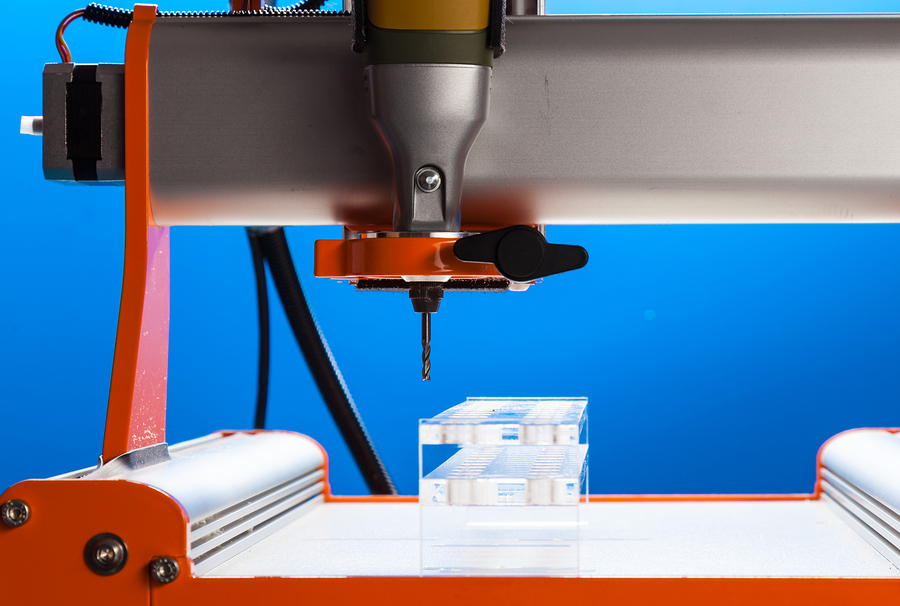If you haven’t heard already, 3D printers aren’t just for plastics. Metal additive manufacturing (AM), the technical term for 3D printing with metal, has the potential to completely change your supply chain. This is especially true for manufacturers dealing with a variety of complex products ordered in small volumes.
In a study published in Additive Manufacturing¸ researchers proposed redefining the traditional supply chain by strategically connecting AM hubs with subtractive manufacturing facilities, also known as computer numerical control (CNC) mills. This combination of AM and CNC mills is hybrid manufacturing, and it has the potential to reduce waste on the floor, increase production speed, and improve product quality.

A primer on hybrid manufacturing
If you’ve heard anything about 3D printing in the last ten years, you already have a grasp of one half of hybrid manufacturing. The process relies on 3D metal printing to produce a complex part or structure within a certain component’s part. The AM product then moves to subtractive CNC manufacturing, which cuts, mills, drills, or polishes the part to its final shape.
For years, industry analysts have thought of AM as a direct competitor for CNC manufacturing. But using both technologies in tandem unlocks their true potential. Using AM, intricate work pieces don’t require skilled machinists to agonize over every detail of every fixture nor does it waste as much as CNC manufacturing. When you “print” a piece, you can fit multiple intricate pieces within a single block instead of needing a whole block of metal to cut pieces away from and shape the part. Once complete, CNC machines cut and polish “printed” pieces without generating excess scrap metal. While AM excels in flexibility, CNC has it beat when it comes to finishing parts.
Hybrid manufacturing increases production speed and accuracy by freeing up skilled workers from tedious processes to handle actual problems. In cases where a company is working with multiple metals, a hybrid system allows products to go back and forth between the two processes without unnecessary welding or cutting.

Why manufacturers aren’t getting into hybrid manufacturing
Though reduced waste and increased efficiency tempts many manufacturers, it can be difficult to add AM capabilities to CNC-only mills. That’s one of the reasons Michael Kay, professor of Industrial Engineering at North Carolina State University, along with his colleagues at Youngstown State and Pennsylvania State University, proposed the creation of a new supply chain between AM and CNC facilities instead of an altogether new manufacturing infrastructure.
As they wrote in their study in Additive Manufacturing, becoming an AM facility requires:
- High investment costs
- Expensive materials
- Ways to deal with “inadequate surface finish” and “inaccurate dimensional tolerances”
- Higher operating costs
Instead of remaking manufacturing floors, the paper suggests connecting existing AM facilities and CNC mills. This reduces the barrier of entry for company leaders who want to produce more complex parts without extreme investment. For equipment manufacturers, this also means an easier way to build difficult parts that are key to their own product innovations.
That’s why Kay and his colleagues’ proposal to focus on potential partnerships instead of new businesses is so critically important. Above all, hybrid manufacturing seeks to make complex part production easier and less wasteful. If that efficiency doesn’t translate to the supply chain, it won’t be as successful as it can be. By creating supply chains among AM and CNC facilities, manufacturers, businesses, and consumers all stand to benefit from less waste, faster production, and higher-quality products.
